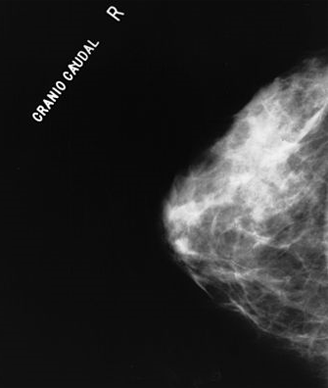3D Screening Can Detect More Breast Cancer Lesions
A Swedish study found that 3D tomosynthesis screening detected 40% more cases of breast cancer compared with traditional digital mammography.
Could tomosynthesis one day replace traditional mammography?

A Swedish study found that tomosynthesis screening detected 40% more cases of breast cancer compared with traditional mammography. Results of the study were published in the journal European Radiology.
“Population-based breast cancer screening with digital mammography has the potential to reduce breast cancer mortality. Still, 15% to 30% of all cancers may be missed,” wrote study authors led by Kristina LÃ¥ng, MD, and Sophia Zackrisson, MD, PhD, radiologists at SkÃ¥ne University Hospital in Malmö and researchers at Lund University. “This applies especially to dense breasts.”
Tomosynthesis uses three-dimensional x-rays and, like tomography, can show multiple thin layers of the breast from different angles. The method is more costly than traditional mammography, but it can reduce patient discomfort and pain, as the breast does not need to be as compressed during the imaging process. Tomosynthesis also delivers lower doses of radiation than traditional mammography.
“We see a change as inevitable. Breast tomosynthesis will be introduced, it is just a question of when and on what scale,” said Zackrisson and LÃ¥ng, in a press release.
The prospective trial-the Malmö Breast Tomosynthesis Screening Trial-looked at 7,500 women between the ages of 40 and 76 (mean age was 56 years). Primary endpoints of the trial were rate of breast cancer detection, recall rate, and positive predictive value.
Breast cancer was detected in 68 women-46 cases were detected by both screening methods, 21 cases were detected by tomosynthesis alone, and 1 case was detected by mammography alone.
The rate of detection using tomosynthesis was 8.9 cases of breast cancer found per 1,000 patients screened (95% CI, 6.9–11.3) compared with 6.3 cases of breast cancer found per 1,000 patients screened using mammography (95% CI, 4.6–8.3; P < .0001).
The recall rate was 3.8% (95% CI, 3.3% to 4.2%) for tomosynthesis compared with 2.6% (95% CI, 2.3% to 3%) for mammography (P < .0001). The positive predictive value, however, was 24% for both screening methods-67 cases out of 282 recalled patients for tomosynthesis compared with 47 breast cancer cases out of 197 recalled patients for mammography.
“We see 5 to 10 years from now as a possible timeframe for the large-scale introduction of the technique,” said Zackrisson. “There is also an aspiration for more personalized screening, and breast tomosynthesis could therefore be one of several methods used.”